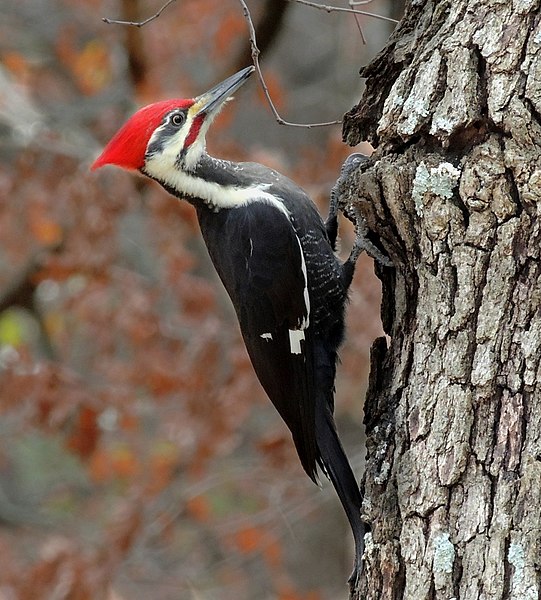The imperial woodpecker is a woodpecker species endemic to Mexico. If it is not extinct, it is the world's largest woodpecker species, at 56–60 cm (22–23.5 in) long. Researchers have discovered that the imperial woodpecker has slow climbing strides and a fast wing-flap rate compared with other woodpeckers. Owing to its close taxonomic relationship, and its similarity in appearance, to the ivory-billed woodpecker, it is sometimes called the Mexican ivory-billed woodpecker, but this name is also used for the extant pale-billed woodpecker. The large and conspicuous bird has long been known to the native inhabitants of Mexico and was called cuauhtotomomi in Nahuatl, uagam by the Tepehuán and cumecócari by the Tarahumara.
Imperial woodpecker
Adult male (front) and adult female (back)
Woodpeckers are part of the bird family Picidae, which also includes the piculets, wrynecks and sapsuckers. Members of this family are found worldwide, except for Australia, New Guinea, New Zealand, Madagascar and the extreme polar regions. Most species live in forests or woodland habitats, although a few species are known that live in treeless areas, such as rocky hillsides and deserts, and the Gila woodpecker specialises in exploiting cacti. Woodpeckers are known as the loudest birds of the forest.
Woodpecker
A black-rumped flameback using its tail for support
Diagram showing the hyoid bone of Dendrocopos major
Use of cacti for breeding and roosting holes allows some woodpeckers to live in treeless deserts, such as the ladder-backed woodpecker, which uses cacti for nesting.






